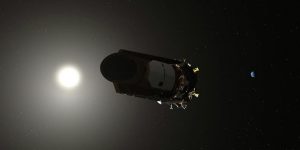Washington, Oct 30 (EFE).- NASA on Tuesday announced that it will end the Kepler space telescope mission, an instrument that has discovered more than 2,600 exoplanets over the past nine years.
“As NASA’s first planet-hunting mission, Kepler has wildly exceeded all our expectations and paved the way for our exploration and search for life in the solar system and beyond,” said Thomas Zurbuchen, the associate administrator of NASA’s Science Mission Directorate in Washington, in a statement.
The US space agency said that Kepler now does not have enough fuel to continue carrying out its scientific operations and that, as a result, NASA has opted to retire the telescope during its current distant orbit some 94 million miles from the Earth, far enough away that there is no danger of it plunging back into the atmosphere.

NASA emphasized that “many” of the planets around other stars discovered via Kepler could be promising sites for finding extraterrestrial life.
“Not only did it show us how many planets could be out there, it sparked an entirely new and robust field of research that has taken the science community by storm,” Zurbuchen said, adding that “Its discoveries have shed a new light on our place in the universe, and illuminated the tantalizing mysteries and possibilities among the stars.”
The most recent analysis of Kepler’s discoveries concludes that it is probable that between 20 and 50 percent of the stars visible in the night sky have small, possibly rocky planets similar in size to Earth and located within their stars’ habitable zone.
According to NASA, that means that the rocky exoplanets are located at distances where water exists as a liquid on the planets’ surfaces, with that element being vital for life as we know it.
Launched on March 6, 2009, the Kepler telescope combined techniques for measuring stellar brightness with the largest digital camera – at that time – for observing objects in outer space.
Years after it was launched, and after overcoming several mechanical problems, Kepler was used to discover more than 2,600 exoplanets and analyzed up to 50,000 stars, according to NASA.
